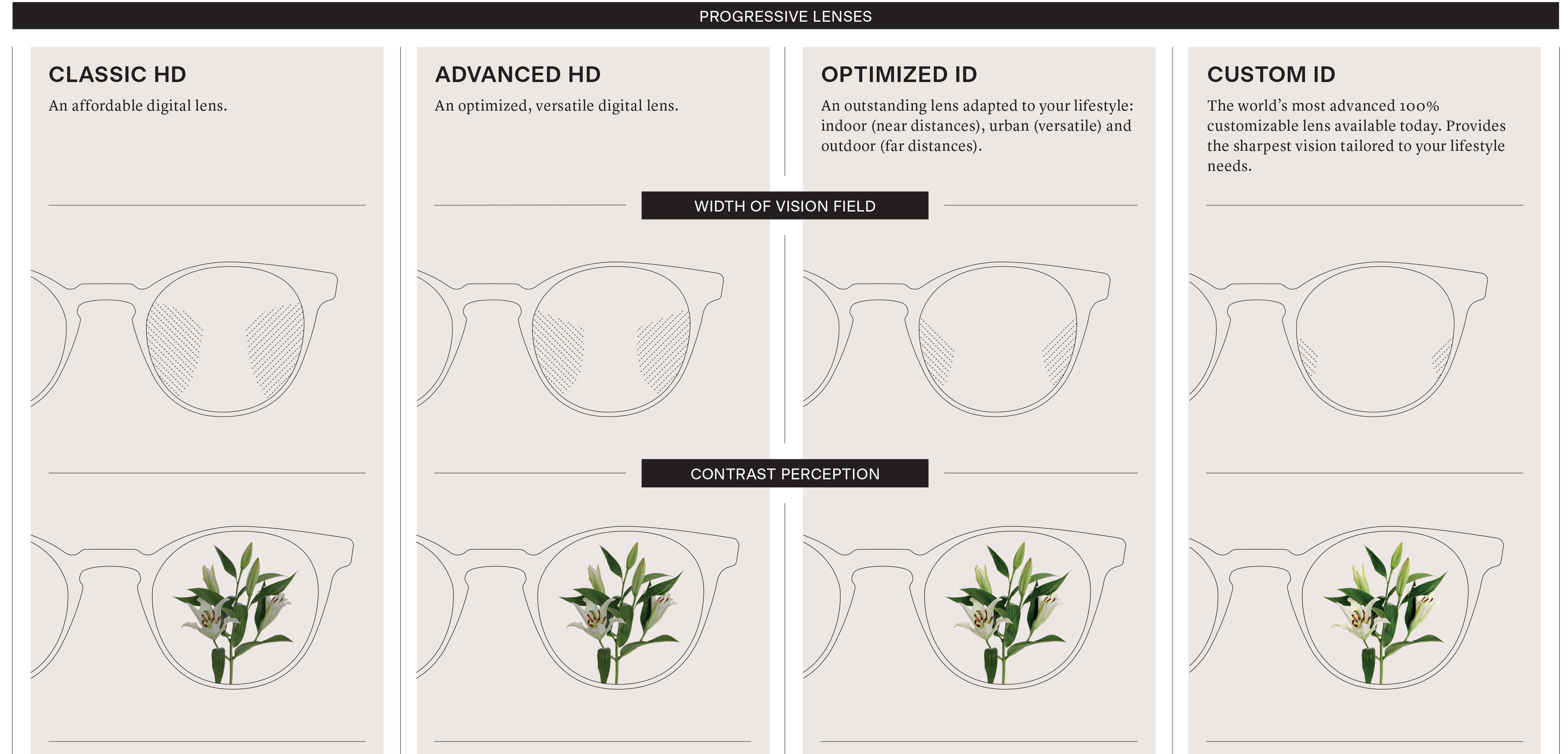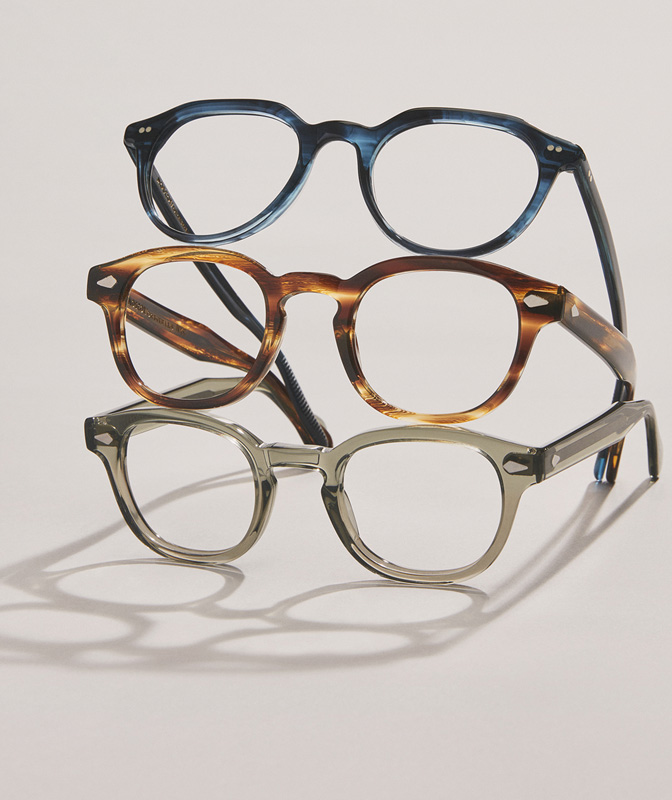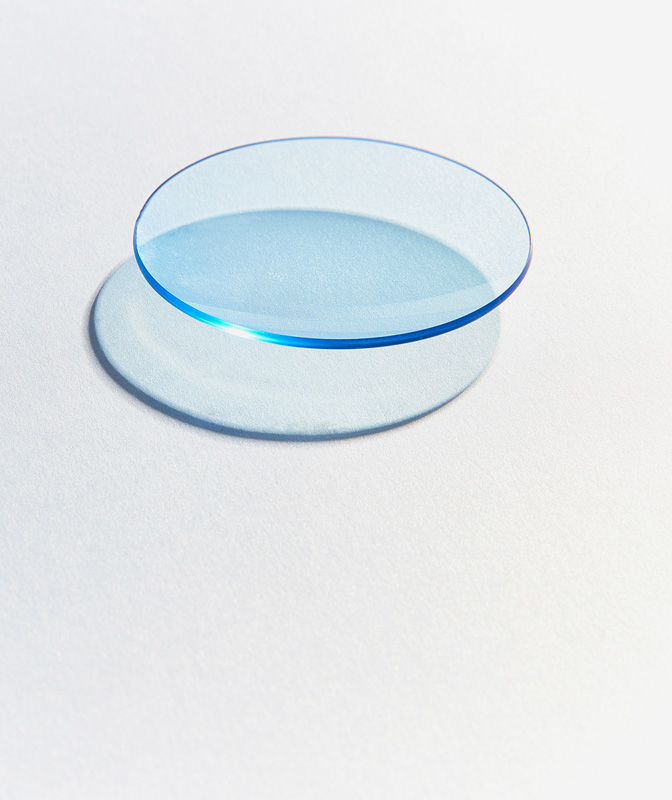What are multifocal lenses?
Multifocal lenses are lenses that allow you to move easily from one type of vision to another. You do not need to change or remove your glasses to see clearly at different distances. With multifocal lenses, there are several zones that allow you to move from one type of vision to another by simply adjusting your gaze.
Who are multifocal lenses for?

Computer or degressive LENSES
- Who are they for? For professionals with presbyopia
- What is it for? For 6 to 8 hours of computer work or reading per day
- Distances targeted by these lenses: Intermediate and near vision
Designed to see well at intermediate and near distances, computer lenses are ideal for people who spend a lot of time in front of a computer or read a lot on a daily basis. They are also recommended for musicians who read music on a stand!
Anti-fatigue lENSES
- Who are they for? For people who have accommodation problems and for students
- What is it for? To slow down eye fatigue
- Distances targeted by these lenses: Far vision and near vision
Anti-fatigue lenses help slow down eye fatigue. They are recommended for people who have accommodation problems, "which means that their eyes strain excessively when they look at something close-up," says Joanna Floros. They are also suited for pre-presbyopia.
Progressive lenses
- Who are they for? For presbyopes
- What are they for? To enjoy 3 types of vision in a dynamic way without changing your glasses
- Distances targeted by these lenses: Far, intermediate and near vision
Considered "all-purpose lenses", progressive lenses simplify the daily life of people with presbyopia by offering the possibility of seeing at any distance with the same pair of glasses.
"In a progressive lens, the eye is centered with far vision," explains Joanna Floros. "To see their screen at an intermediate distance, the person will have to lift their chin. And to read something, they will have to look at the bottom of their lens".
Customizable to individual needs, progressive lenses can be especially useful for a teacher who alternates between looking at their computer, their students and taking notes. Similarly, progressive lenses can be well suited to the daily life of a truck driver, who needs to keep an eye on their odometer, on the road and on their papers.
How to choose multifocal lenses
There are several ranges of multifocal lenses. The difference lies mainly in the range of lenses and the type of technology being used.
"The quality of a multifocal lens can be compared to that of a digital image. In a high-resolution image, there are more pixels than in a low-resolution image. Similarly, a high-quality multifocal lens will have more points crafted on the lens, and therefore less distortion in the vision," explains Joanna Floros.
In addition, a high-end lens can be customized to the wearer's lifestyle, anatomy and frame selection. "It will be easier to adapt than a standard lens," Joanna Floros says.

The Doyle experience
When you choose multifocal lenses at Doyle, we do everything to make sure you are completely satisfied. Our professionals will ask you a variety of questions to ensure that your lenses are a perfect fit, meaning that they are 100% suited to your vision and lifestyle. Our team of opticians will also recommend which frames are best suited to fit multifocal lenses - the frame will have to be tall enough to accommodate up to three distinct types of vision in the same lens.
If you think multifocal lenses might be right for you, book an appointment today with one of our professionals at a Doyle boutique near you!






